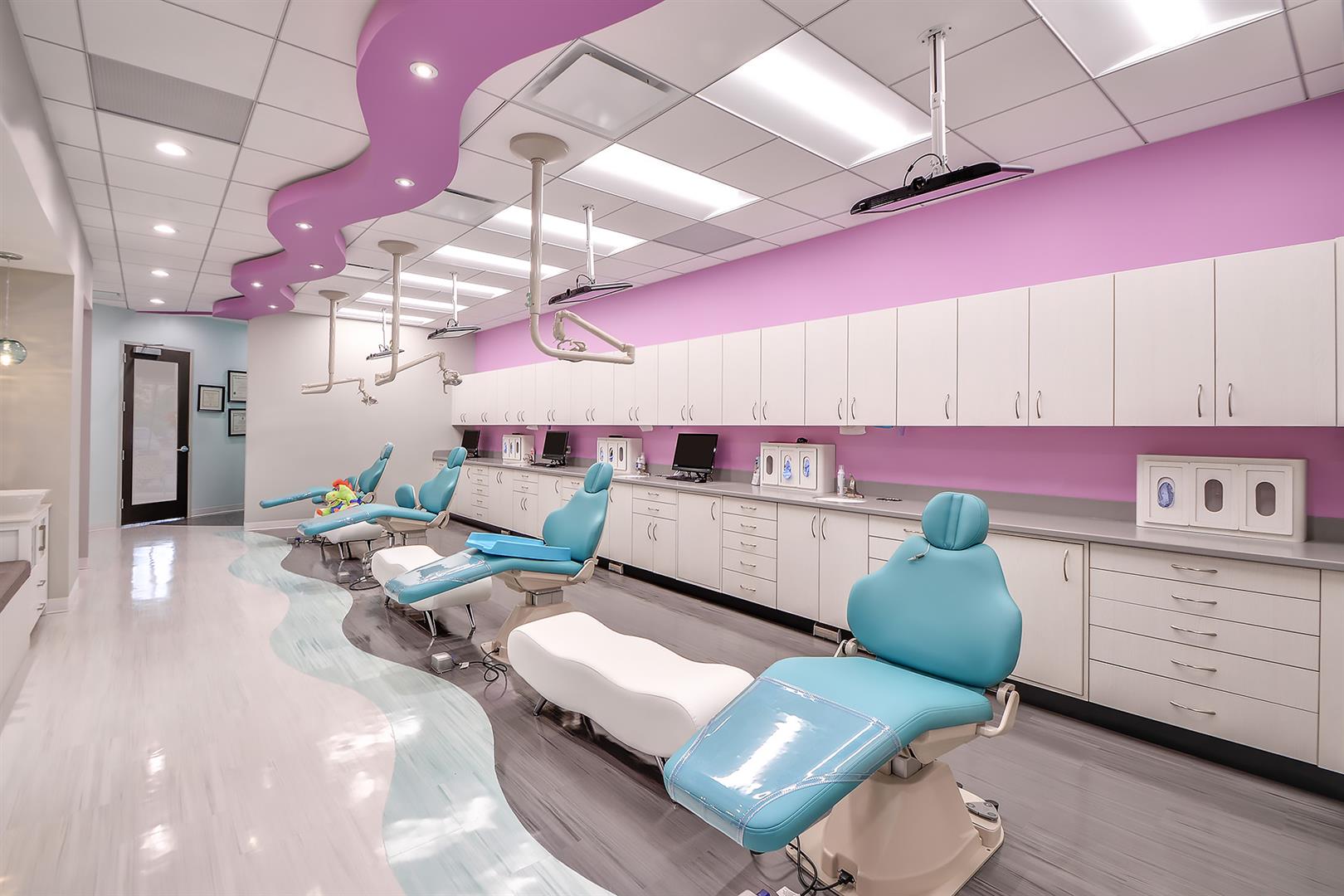When designing or upgrading your operatory, selecting the right dental delivery system is a foundational decision. From rear and chair-mounted to over-the-patient, cart, or cabinet-mounted configurations, each offers distinct advantages—and trade-offs.
This guide walks you through the pros and cons of each system, then offers tailored guidance for two common practice types: new start-ups and multi-specialty or DSO clinics.
Delivery Systems Overview: Pros and Cons
Rear Delivery
- ✔ Pros: Hidden from patient view, clean aesthetic, great for team-based dentistry.
- ✘ Cons: Requires assistant support, can cause ergonomic strain.
Chair-Mounted
- ✔ Pros: Space-saving, instruments within easy reach, good for solo providers.
- ✘ Cons: Limited for ambidextrous setups, can crowd the patient zone.
Over-the-Patient
- ✔ Pros: Streamlines workflow, supports high volume and ambidextrous use.
- ✘ Cons: Visually intimidating, harder to upgrade.
Mobile Cart
- ✔ Pros: Flexible, affordable, easy to reposition or repurpose.
- ✘ Cons: Requires floor space, potential tripping/clutter hazards.
Cabinet-Mounted
- ✔ Pros: Clean, concealed, centralized storage.
- ✘ Cons: Less accessible during procedures, limited mobility.
New Practice Start-Ups: Budget Meets Practicality
Launching a new practice means every choice matters—financially and operationally. Your delivery system should help you establish efficient workflows while allowing room to grow.
What to Prioritize:
- Affordability & Versatility: Mobile carts or chair-mounted units offer the best entry-level balance.
- Workflow Simplicity: Systems that minimize clutter and maximize reach reduce daily strain.
- Future Adaptability: Opt for modular systems that can evolve as your services expand.
Top Picks for Start-Ups:
- Chair-Mounted: Great for general dentists with limited space.
- Mobile Cart: Lets you try different layouts for different providers and assistants.
- Over-the-Patient: Ideal for practices aiming for high-efficiency from the start.
Pro Tip: Don’t compromise on ergonomics—building smart habits early prevents long-term strain.
Multi-Specialty & DSO Clinics: Consistency Meets Flexibility
For DSOs or clinics with multiple providers and specialties, the goal is to strike a balance between uniform systems and personalized use.
What to Prioritize:
- Standardization Across Operatories: Simplifies training and minimizes disruptions.
- Multi-User Flexibility: Accommodate left/right-handed users and a range of specialties.
- Durability: Choose systems built for high throughput and easy serviceability.
Top Picks for Multi-Specialty Clinics:
- Over-the-Patient or Rear Delivery: Efficient and team-friendly in multi-chair environments.
- Cabinet-Mounted: Ideal for hygiene or shared-use rooms with a patient-friendly aesthetic.
- Chair-Mounted (selectively): In operatories with specific high-volume workflows.
Pro Tip: Invest in systems that balance uniformity with customization—especially when scaling across locations.
Final Takeaway
There’s no one-size-fits-all dental delivery system. By understanding the strengths and limitations of each type—and how they align with your practice’s goals—you can design a workspace that supports efficiency, comfort, and growth.
Whether you’re opening your first office or managing a network of clinics, the right delivery system is an investment in your future success.




